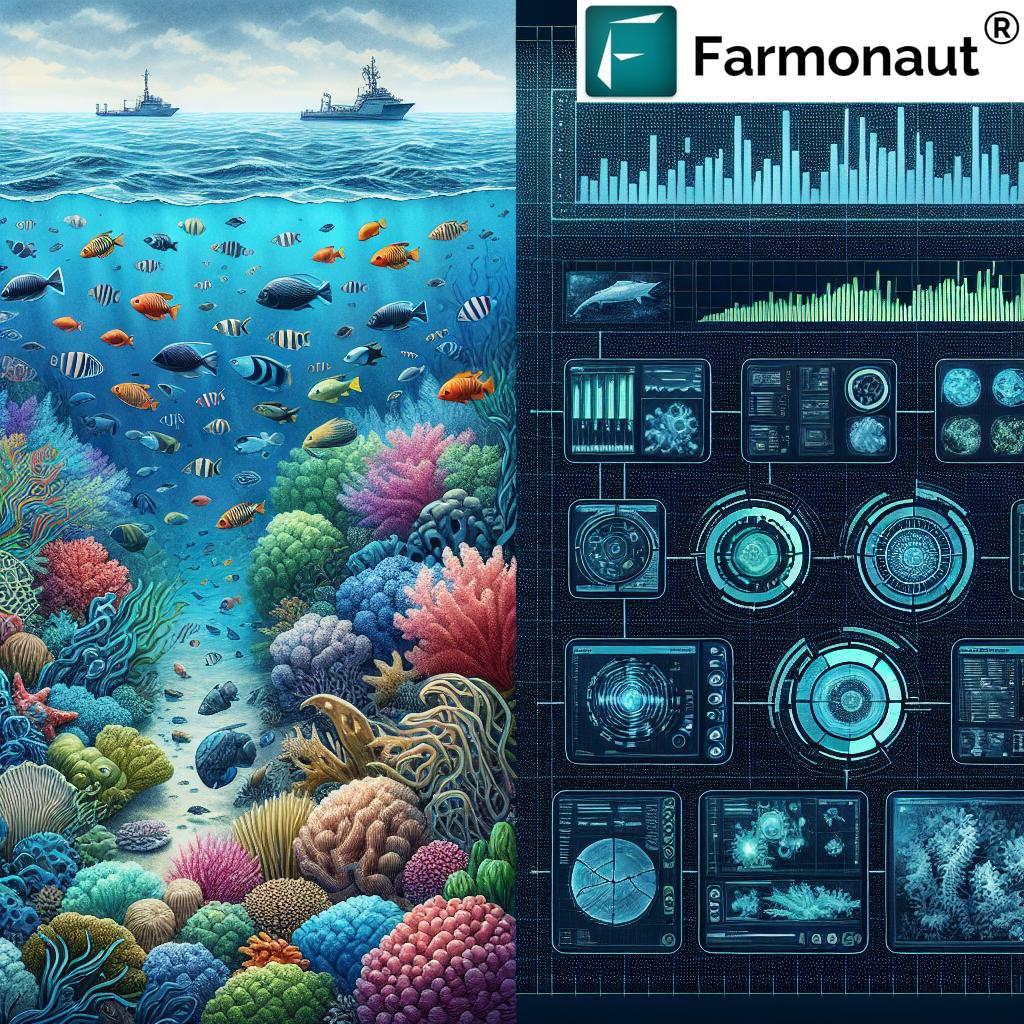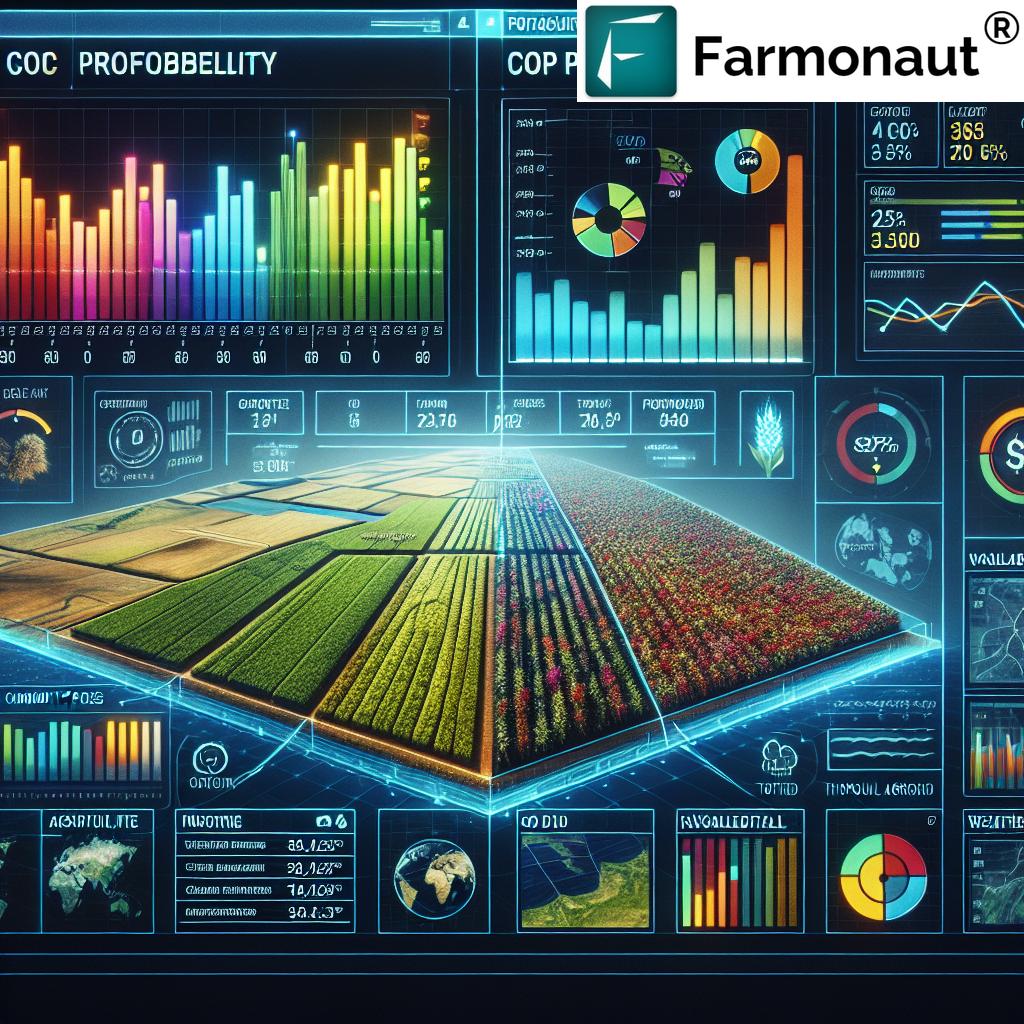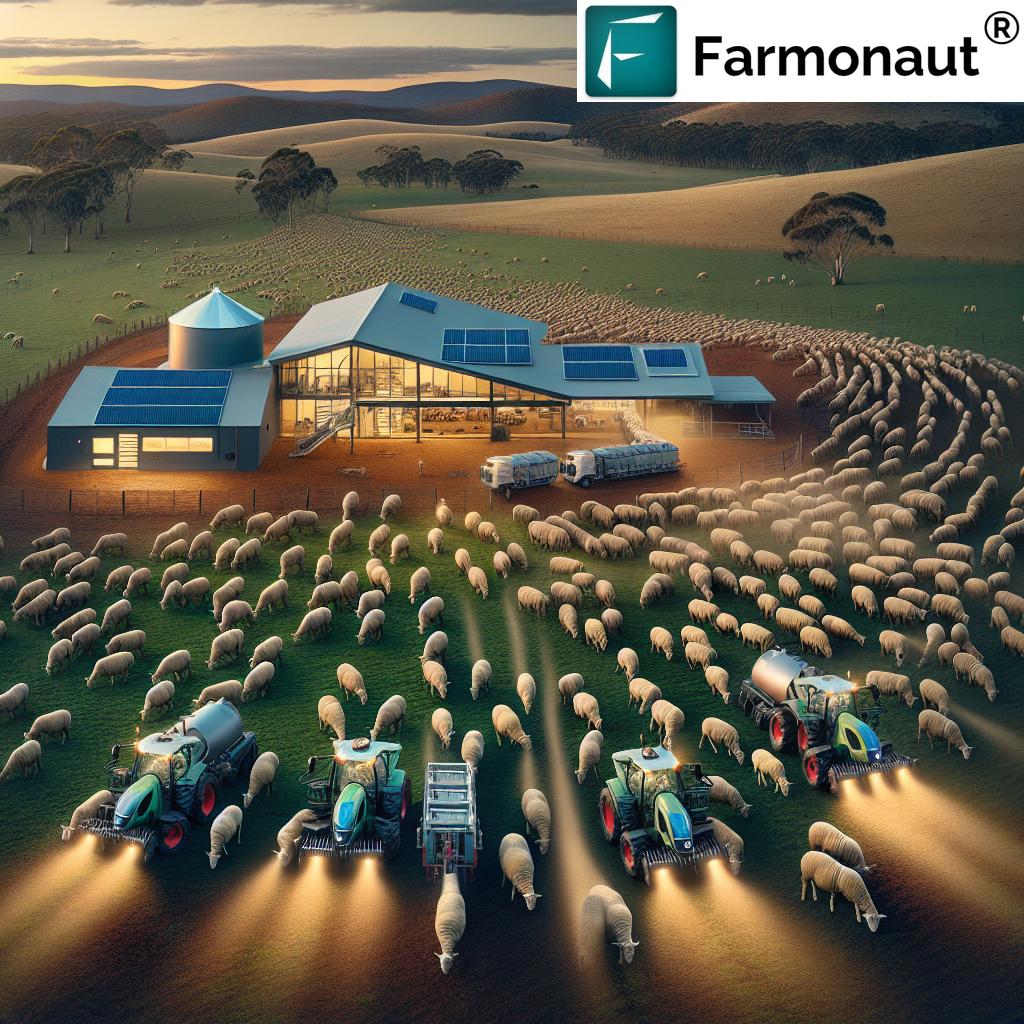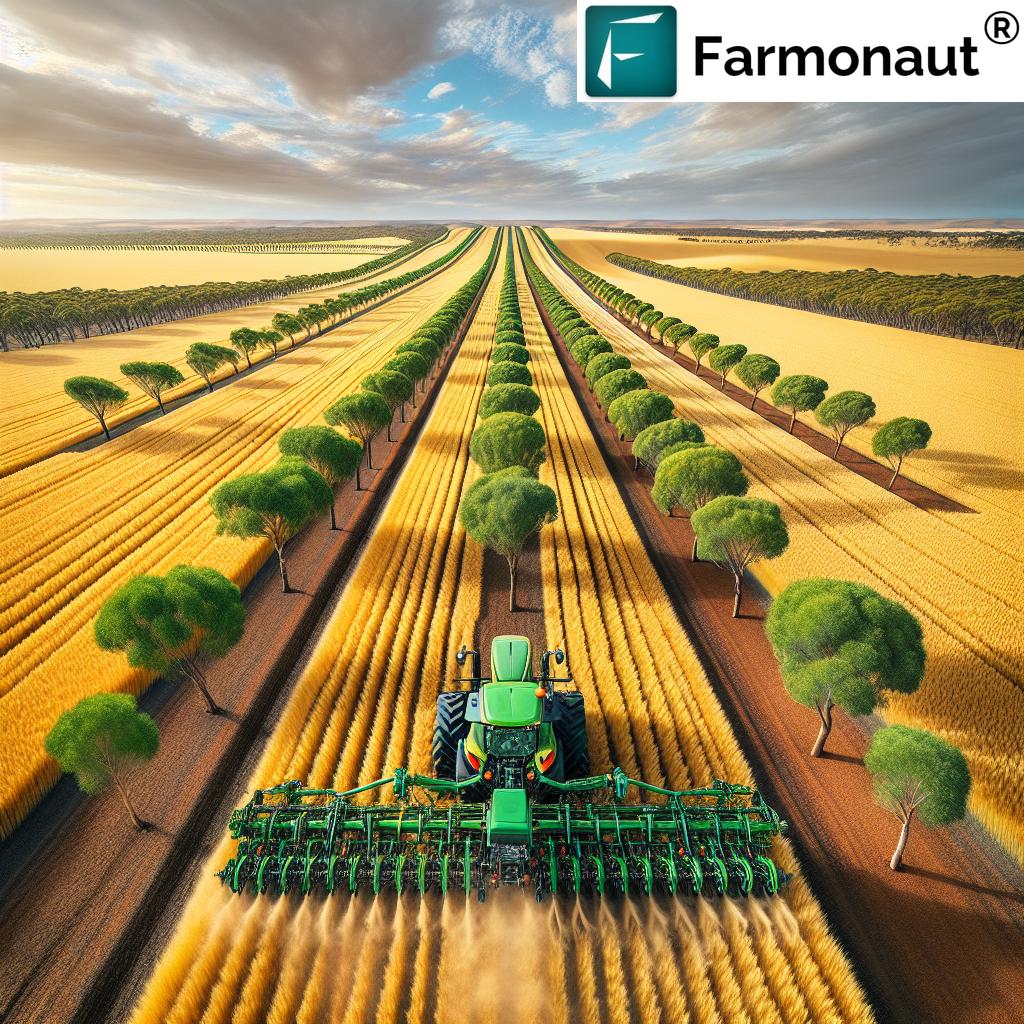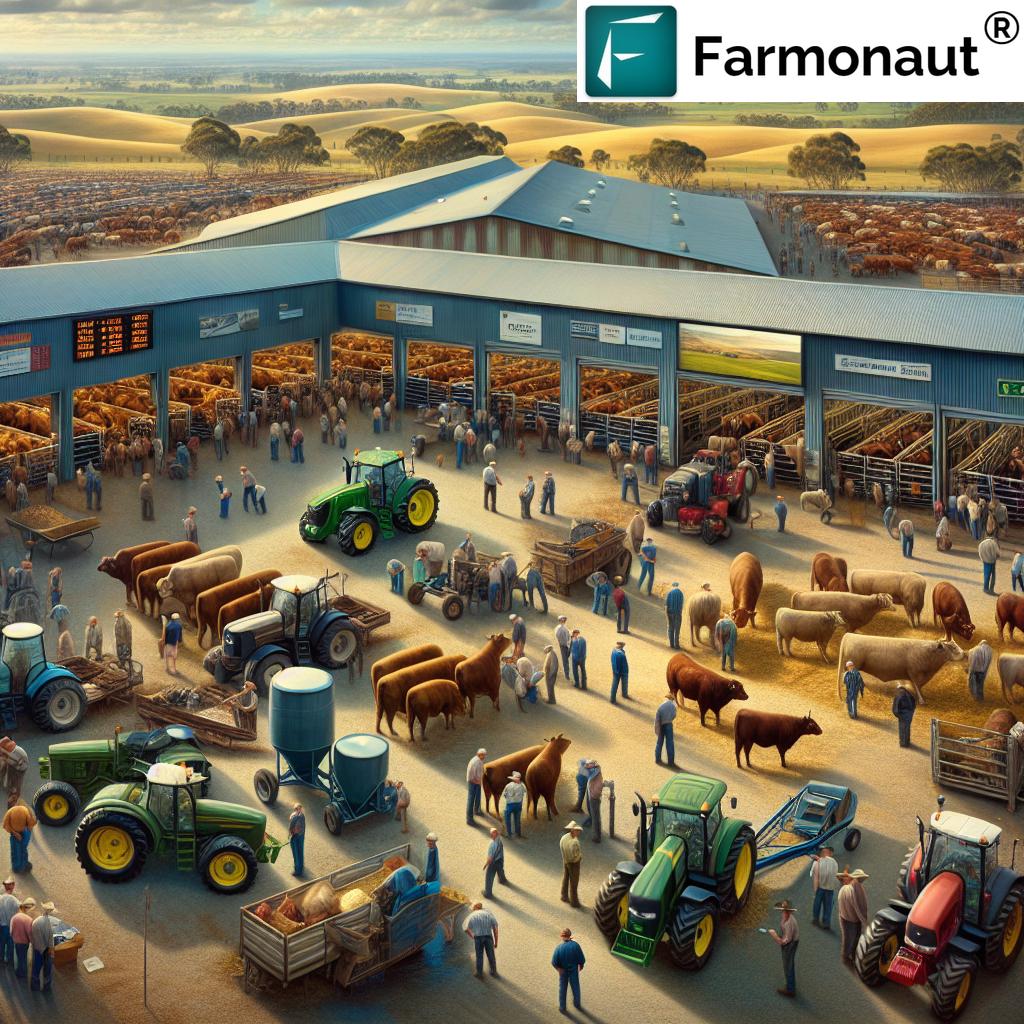Mastering Forage Supply and Demand: Sustainable Solutions for Efficient Livestock Management in Australia and New Zealand
“Australian and New Zealand farmers can increase pasture utilization by up to 30% using data-driven forage management techniques.”
Welcome to our comprehensive guide on mastering forage supply and demand for sustainable and efficient livestock management in Australia and New Zealand. In this blog post, we’ll explore cutting-edge strategies and technologies that are revolutionizing the agricultural landscape in these regions. As we delve into sustainable agriculture practices and livestock management technology, we’ll uncover how farmers can optimize their operations, increase profitability, and contribute to a more sustainable future.
The Importance of Balancing Forage Supply and Demand
In the vast pastures of Australia and New Zealand, efficient forage management is crucial for successful livestock operations. Balancing forage supply and demand is not just about having enough feed for your animals; it’s about optimizing resources, reducing costs, and maintaining healthy ecosystems. Let’s explore why this balance is so critical:
- Resource Efficiency: Proper management ensures optimal use of available land and reduces the need for supplementary feeding.
- Economic Benefits: Balanced forage systems can significantly reduce feed costs, one of the largest expenses in livestock farming.
- Environmental Sustainability: Well-managed pastures contribute to soil health, biodiversity, and carbon sequestration.
- Animal Welfare: Consistent access to high-quality forage improves animal health and productivity.
At Farmonaut, we understand these challenges and offer innovative solutions to help farmers achieve this crucial balance. Our satellite-based farm management solutions provide real-time insights into pasture conditions, enabling data-driven farming decisions that can transform your agricultural efficiency.
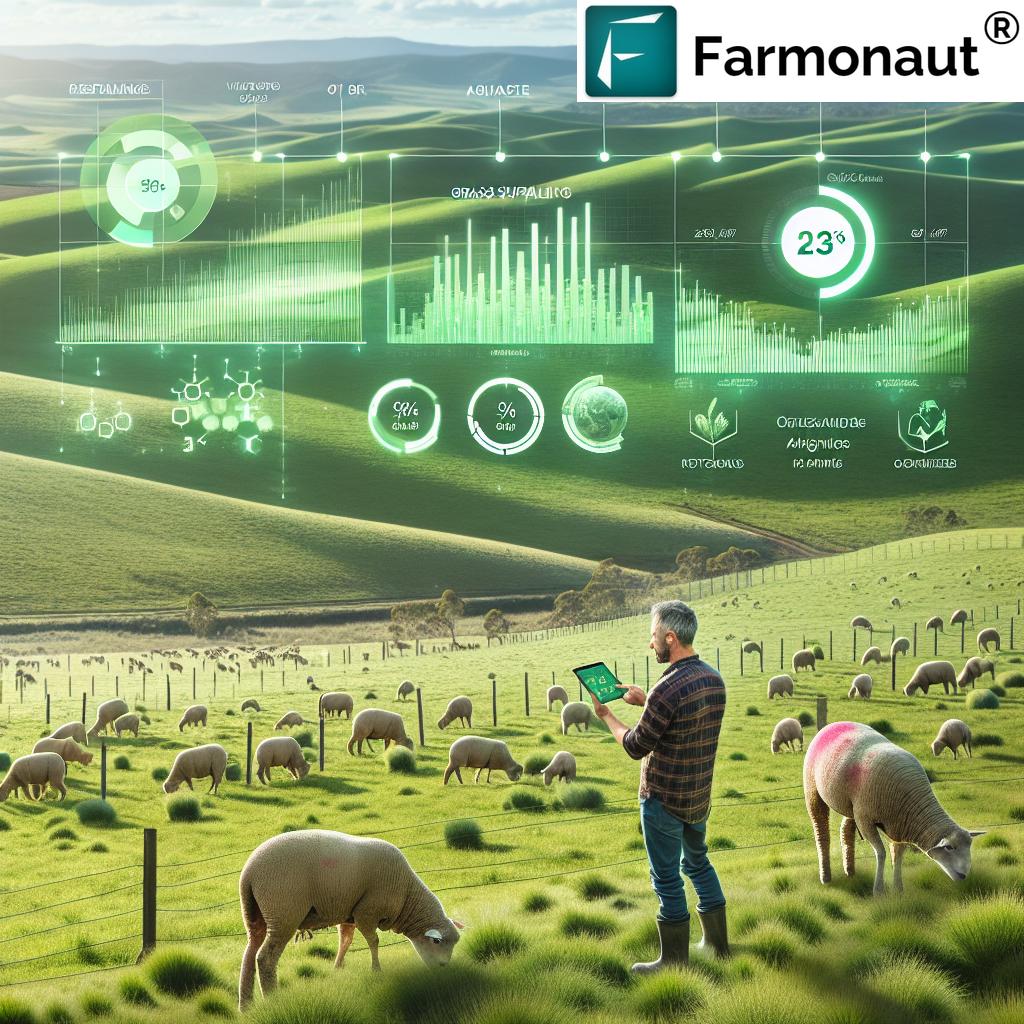
Sustainable Agriculture Practices for Optimal Forage Production
Implementing sustainable agriculture practices is key to optimizing forage production while preserving the environment. Here are some strategies that Australian and New Zealand farmers can adopt:
- Rotational Grazing: This practice involves dividing pastures into smaller paddocks and moving livestock between them. It allows for better grass recovery and prevents overgrazing.
- Diverse Pasture Species: Planting a mix of grass and legume species can improve soil health, increase drought resistance, and provide a more balanced diet for livestock.
- Soil Health Management: Regular soil testing and appropriate fertilization can enhance pasture productivity and sustainability.
- Water Conservation: Implementing efficient irrigation systems and water-saving techniques is crucial, especially in drought-prone areas of Australia.
By leveraging Farmonaut’s advanced crop monitoring and yield prediction tools, farmers can make informed decisions about these practices. Our satellite imagery and AI-driven insights help you track pasture health, soil moisture levels, and other critical metrics, enabling you to fine-tune your management strategies for optimal results.
Livestock Management Technology: A Game-Changer for Efficiency
The integration of technology in livestock management has opened up new possibilities for efficiency and sustainability. Here’s how modern tech solutions are transforming the industry:
- Satellite-Based Monitoring: Farmonaut’s satellite imagery provides real-time data on pasture conditions, helping farmers make timely decisions about grazing rotations and supplementary feeding.
- AI-Powered Analytics: Our Jeevn AI Advisory System analyzes various data points to provide personalized recommendations for pasture management and livestock care.
- Blockchain Traceability: This technology ensures transparency in the supply chain, from farm to consumer, enhancing trust and product value.
- Remote Sensing Technology: Drones and sensors can provide detailed information about pasture quality and animal health, enabling precise management.
By integrating these technologies, farmers can significantly improve their agricultural efficiency and farm profitability. Farmonaut’s platform brings these innovations together in an accessible, user-friendly format, making it easier for farmers of all scales to benefit from advanced agricultural technology.
Data-Driven Farming Decisions: The Key to Optimizing Forage Supply and Demand
In the era of precision agriculture, data-driven decision-making is crucial for balancing forage supply and demand. Here’s how farmers can leverage data to optimize their operations:
- Pasture Growth Forecasting: Using historical data and current conditions, farmers can predict pasture growth rates and plan grazing schedules accordingly.
- Stocking Rate Optimization: Data analytics can help determine the optimal number of animals a pasture can support without degradation.
- Feed Budgeting: Accurate forecasting allows for better planning of supplementary feed requirements, reducing costs and waste.
- Climate Adaptation: Long-term data trends can inform decisions about pasture species selection and management practices to adapt to changing climate conditions.
Farmonaut’s platform integrates these data-driven approaches, providing farmers with actionable insights through our API and mobile applications. Our tools enable you to make informed decisions that balance productivity with sustainability, ensuring the long-term health of your pastures and livestock.
Pasture Management Strategies for Different Livestock Types
Effective pasture management varies depending on the type of livestock you’re raising. Let’s explore strategies tailored for different animals common in Australia and New Zealand:
- Sheep: Implement rotational grazing to control parasites and maintain pasture quality. Consider using drought-resistant forage species in drier regions.
- Cattle: Use strip grazing or cell grazing techniques to improve pasture utilization. Implement buffer feeding during periods of low pasture growth.
- Bison: Although less common, bison require robust fencing and larger pastures. Focus on native grass species that can withstand their grazing patterns.
- Stockers: Implement flexible grazing systems that can adapt to changing market conditions and forage availability.
Farmonaut’s satellite-based monitoring can help you track pasture conditions for each of these livestock types, enabling you to adjust your management strategies in real-time. Our platform’s versatility makes it an invaluable tool for diverse farm enterprises across different regions of Australia and New Zealand.
“Implementing sustainable forage strategies can reduce livestock feed costs by 20-25% in Australia and New Zealand.”
Agricultural Efficiency Solutions: Maximizing Output While Minimizing Input
Improving agricultural efficiency is crucial for sustainable livestock management. Here are some solutions that can help farmers maximize their output while minimizing inputs:
- Precision Fertilizer Application: Use soil testing and GPS-guided equipment to apply fertilizers only where needed, reducing costs and environmental impact.
- Smart Irrigation Systems: Implement water-efficient irrigation methods like drip irrigation or moisture sensors to optimize water use.
- Energy-Efficient Farm Equipment: Invest in modern, fuel-efficient machinery to reduce operational costs and carbon emissions.
- Integrated Pest Management (IPM): Adopt holistic approaches to pest control that minimize chemical use and promote ecological balance.
Farmonaut’s platform supports these efficiency solutions by providing detailed insights into soil health, water usage, and pest pressures. Our satellite imagery and AI analysis can help you identify areas that need attention, allowing for targeted interventions that improve overall farm efficiency.
Farm Profitability Optimization: Balancing Costs and Returns
Optimizing farm profitability is essential for sustainable livestock management. Here are strategies to balance costs and returns:
- Cost Management: Analyze and reduce unnecessary expenses through efficient resource use and smart purchasing decisions.
- Value-Added Products: Consider diversifying into premium or niche markets that command higher prices for your livestock products.
- Risk Management: Implement strategies to mitigate risks from market fluctuations and environmental challenges.
- Continuous Improvement: Regularly assess and refine your farming practices to increase productivity and reduce waste.
Farmonaut’s platform contributes to farm profitability by providing tools for efficient resource management and data-driven decision-making. Our carbon footprinting feature can also help you identify areas where you can reduce emissions, potentially opening up new revenue streams through carbon credits or sustainable certifications.

Forage Production Forecasting: Planning for the Future
Accurate forage production forecasting is crucial for effective livestock management. It allows farmers to plan ahead, ensuring they have sufficient feed for their animals throughout the year. Here’s how you can improve your forecasting:
- Historical Data Analysis: Use past production data to identify trends and patterns in forage growth.
- Climate Monitoring: Keep track of long-term weather patterns and seasonal forecasts to anticipate growth conditions.
- Soil Health Assessment: Regular soil testing can help predict nutrient availability and potential growth rates.
- Technology Integration: Utilize satellite imagery and AI-powered analytics for more accurate predictions.
Farmonaut’s advanced crop monitoring and yield prediction tools are designed to enhance your forage production forecasting. By combining satellite data with AI analysis, we provide farmers with accurate, timely predictions that can inform crucial management decisions.
Agricultural Sustainability Resources: Tools for Long-Term Success
Sustainability is key to long-term success in agriculture. Here are some resources and tools that can help farmers in Australia and New Zealand maintain sustainable practices:
- Soil Health Testing Kits: Regular soil testing helps maintain optimal soil conditions for forage growth.
- Water Management Systems: Implement efficient irrigation systems and water harvesting techniques to conserve this precious resource.
- Biodiversity Monitoring Tools: Track and encourage biodiversity on your farm to promote ecosystem health.
- Carbon Sequestration Calculators: Measure and optimize your farm’s carbon sequestration potential.
Farmonaut’s platform complements these resources by providing a comprehensive view of your farm’s health and productivity. Our satellite-based monitoring and AI-driven insights can help you track the effectiveness of your sustainability efforts over time.
For more detailed information on integrating our technology into your farming practices, check out our API Developer Docs.
Comparative Analysis of Forage Management Strategies
| Management Aspect | Traditional Method | Sustainable Solution | Potential Benefits |
|---|---|---|---|
| Pasture Rotation | Fixed grazing patterns | Dynamic rotational grazing based on data insights | 15-20% increase in forage yield |
| Water Conservation | Flood irrigation | Precision irrigation with soil moisture sensors | 30-40% reduction in water usage |
| Soil Health Management | Annual soil testing | Continuous monitoring with satellite and sensor data | 20-25% improvement in soil organic matter |
| Forage Species Diversity | Monoculture pastures | Multi-species pasture blends | 10-15% higher livestock carrying capacity |
Adapting to Market Fluctuations and Environmental Changes
The agricultural landscape is constantly evolving, influenced by market dynamics and environmental shifts. To thrive in this changing environment, farmers need to be adaptable and forward-thinking. Here are some strategies to help you navigate these challenges:
- Diversification: Consider diversifying your livestock or introducing complementary enterprises to spread risk.
- Climate-Smart Practices: Adopt farming methods that are resilient to climate change, such as drought-tolerant forage varieties.
- Market Analysis: Stay informed about market trends and consumer preferences to align your production accordingly.
- Flexible Management Systems: Develop systems that can quickly adapt to changing conditions, whether environmental or economic.
Farmonaut’s platform supports these adaptive strategies by providing real-time data and predictive insights. Our tools can help you anticipate changes and make proactive decisions to maintain profitability and sustainability in your livestock operations.
Integrating Technology for Sustainable Livestock Management
Technology integration is crucial for achieving sustainable and efficient livestock management. Here’s how you can leverage technology in your operations:
- Remote Monitoring: Use GPS collars and drones to track animal movements and health.
- Data Analytics: Employ big data analytics to gain insights from farm data and make informed decisions.
- Automated Systems: Implement automated feeding and watering systems to improve efficiency and reduce labor costs.
- Precision Agriculture: Utilize precision farming techniques for targeted resource application and management.
Farmonaut’s platform seamlessly integrates with these technologies, providing a central hub for data collection, analysis, and decision-making. Our API allows for easy integration with other farm management tools, creating a comprehensive technology ecosystem for your farm.
The Future of Forage Management in Australia and New Zealand
As we look to the future, the landscape of forage management in Australia and New Zealand is set to evolve further. Here are some trends and innovations we anticipate:
- AI-Driven Decision Making: Advanced AI systems will provide even more accurate and personalized recommendations for farm management.
- Vertical Farming for Fodder: In areas with limited land, vertical farming techniques may be adapted for forage production.
- Bioengineered Forage Crops: Development of forage varieties with enhanced nutritional profiles and environmental resilience.
- Integrated Circular Systems: Farms will increasingly adopt closed-loop systems that minimize waste and maximize resource efficiency.
At Farmonaut, we’re committed to staying at the forefront of these innovations, continually updating our platform to provide farmers with the most advanced tools for sustainable livestock management.
Conclusion: Embracing Sustainable Solutions for a Thriving Agricultural Future
Mastering forage supply and demand is crucial for efficient livestock management in Australia and New Zealand. By embracing sustainable solutions and leveraging technology, farmers can optimize their operations, increase profitability, and contribute to environmental conservation.
Farmonaut is proud to be at the forefront of this agricultural revolution, providing farmers with the tools and insights they need to succeed in an ever-changing landscape. Our satellite-based monitoring, AI-driven analytics, and comprehensive farm management platform empower farmers to make data-driven decisions that balance productivity with sustainability.
As we move forward, the integration of technology, sustainable practices, and innovative management strategies will be key to addressing the challenges of forage supply and demand. By adopting these approaches, farmers can ensure the long-term viability of their operations while contributing to a more sustainable and food-secure future for Australia, New Zealand, and beyond.
FAQ Section
Q: How can Farmonaut’s technology improve my forage management?
A: Farmonaut’s satellite-based monitoring provides real-time insights into pasture health, allowing for timely decisions on grazing rotations and resource allocation. Our AI-driven analytics can help predict forage growth, optimize stocking rates, and improve overall farm efficiency.
Q: Is Farmonaut suitable for small-scale farmers in Australia and New Zealand?
A: Absolutely! Farmonaut’s platform is designed to be scalable and accessible for farms of all sizes. Our solutions can be tailored to meet the needs of small-scale operations, providing valuable insights without the need for expensive on-ground equipment.
Q: How does Farmonaut contribute to sustainable agriculture practices?
A: Farmonaut promotes sustainability by enabling precise resource management, reducing waste, and optimizing land use. Our carbon footprinting feature also helps farmers monitor and reduce their environmental impact, contributing to more sustainable farming practices.
Q: Can Farmonaut’s technology help me adapt to climate change?
A: Yes, Farmonaut’s predictive analytics and real-time monitoring can help you anticipate and respond to changing climate conditions. Our platform provides valuable data on soil moisture, vegetation health, and weather patterns, enabling you to make informed decisions and adapt your farming practices accordingly.
Q: How do I get started with Farmonaut?
A: Getting started with Farmonaut is easy! You can sign up for our platform through our website or mobile apps. We offer various subscription options to suit different farm sizes and needs. Our team is also available to provide support and guidance as you integrate our technology into your farm management practices.







